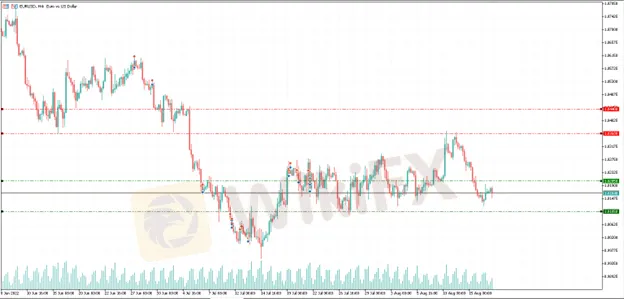简体中文
繁體中文
English
Pусский
日本語
ภาษาไทย
Tiếng Việt
Bahasa Indonesia
Español
हिन्दी
Filippiiniläinen
Français
Deutsch
Português
Türkçe
한국어
العربية
GemForex - EUR/USD
Abstract:EURUSD Forecast: Vulnerability ahead of fresh EZ economic data, FOMC

The EUR/USD finds itself in the red at the time of writing, down for the week but still in the 200-pip range set in mid-July. Since then, news from the US and a solid US job market temporarily spooked the recession ghost that hovers above the Western nations, and in this case, the Eurozone. Although thats good news, the released European data signals a contraction beginning in the Union, and EUR/USD remains technically bearish for the upcoming months ahead.
While the majority of Western Banks reversed their dovish course ahead of shocking inflation numbers, the European Central Bank, on the other hand, got into the tune of the regressing markets a little bit later than expected, and it only remains a question if the tools under the ECBs disposal will be effective.
The ECB finds itself in a precarious position, considering the fact that the Eurozone as a whole enters Autumn facing the worst energy crisis of its time, with prices soaring across every sector and further adding pressure on already high inflation and supply-chain issues. The chaos extends potentially to food provision and industrial autonomy, due to tensions with Ukraine and the sanctions on Russia, which backfired badly.
And yet, the ECB still considers that a recession is unlikely for this year and the next, and sticks to its cautious tightening, another reason why EUR/USD remains close to a multi-decade low of 0.9951.
For the first time since the Eurozone crisis of 2010, the macroeconomic data released these past few weeks showed that the EU is not in a good shape, and the German and EU retail sales fell into negative territory in June while manufacturing output in the region stood contracted during July. Apart from services activities also decreasing, the industrial production and factory orders in Germany, contracted year to year.
Inflation, energy shortage crisis, and the potential negotiations over Ukraine will take center stage this and next week, especially for Germany, confirming if the ECB is capable of battling or at least dealing with the aforementioned issues.
On the technical front, EUR/USD currently trades in the range of 1.01850 – 1.01500, confirming the uncertainty of the market, as the current price is ranging below the regional high of 1.1950, and the RSI sell momentum remains intact.
The daily chart gives little clues for the short-term, but as technical indicators turn south and retain the bearing slope, a break below 1.0105 will open the door for a retest of parity, with the main bearing target at 0.988.
On the upper side, the immediate resistance comes at 1.0205, before needing to accelerate through 1.0280 and towards 1.0360, to get out of the negative zone. If that is confirmed, the next up barrier comes at 1.0490 and finally 1.0615.
Nevertheless, EUR/USD has to pass many macroeconomic and technical hurdles in order for that possibility to become reality, and we will have to see if the market will maintain its bearing bias, or not.
Disclaimer:
The views in this article only represent the author's personal views, and do not constitute investment advice on this platform. This platform does not guarantee the accuracy, completeness and timeliness of the information in the article, and will not be liable for any loss caused by the use of or reliance on the information in the article.
Read more

GEMFOREX Numbers Outlook – February 2023
these are the GEM numbers of the month for February:

GemForex - weekly analysis
The Week Ahead: Will the FED pivot to the emerging dynamics?

GemForex - weekly analysis
European Central Bank under enormous pressure ahead of Fed rates

Euro (EUR) Price Outlook: No End Yet in Sight for EUR/USD Weakness
EUR/USD continues to tumble, with no sign yet of a rally or even a near-term bounce.. The pair has dropped already beneath the support line of a downward-sloping channel in place since late May this year to its lowest level since July 2020 and there is now little support between here and 1.1170. From a fundamental perspective, the Euro is suffering from a continued insistence by the European Central Bank that much higher Eurozone interest rates are not needed.
WikiFX Broker
Latest News
Japan to Take Action to Stabilize the Yen
Ringgit Remains Flat Amid Holidays, US Debt Concerns Loom
Taurex: Is it Safe to Invest?
WikiEXPO Global Expert Interview: Loretta Joseph——Unlock the forefront of digital finance
Vietnamese Police Bust $1.2 Million Crypto Fraud Case
XTB Receives Licenses to Operate in Indonesia & UAE
SEBI Bans Big "Finfluencers for Misleading Investors"
WikiFX New Year Bash: Chance to Win 70 USDT
Malaysia’s Securities Commission Enforces Ban on Bybit & Its CEO
WikiFX Review: Is HYCM still reliable in 2024?
Currency Calculator






